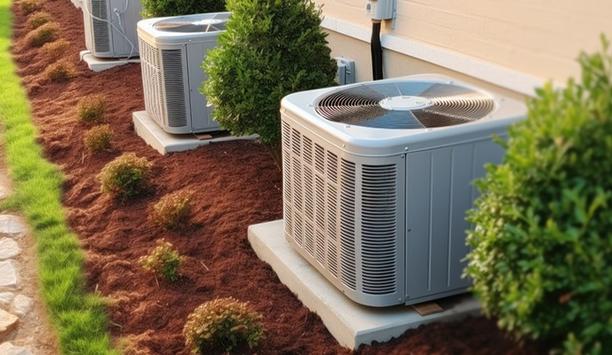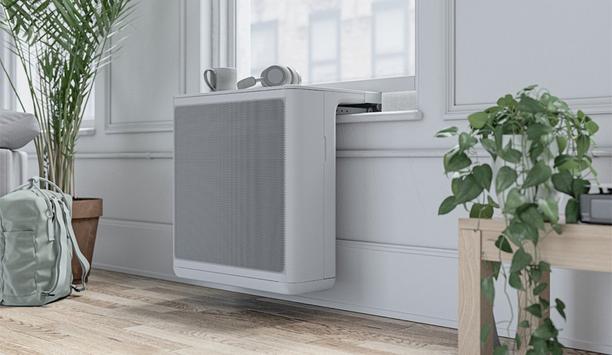2LA flammable refrigerants - Editor's Note
TE Connectivity’s main product categories for the HVAC market are power interconnects, signal interconnects, magnet wire for motors, and heat-shrink tubing to seal against environmental factors. component materials The company works with HVAC original equipment manufacturers (OEMs) to solve challenges such as harsh environments, safety, and power and signal usage. Although components are a “small” element when an OEM assembles an HVAC system, their impact can be big. For exa...
SNAP Rule 26 marks an important milestone in the transition from commercial refrigeration to new refrigerants. The rule lists refrigerant substitutes that provide a spectrum of technological solutions to meet required performance, global warming potential (GWP), safety, and environmental standards. SNAP stands for Significant New Alternatives Policy, a program by the U.S. EPA (Environmental Protection Agency) under the Clean Air Act. In general, the program aims to evaluate and regulate...
Revised building codes, based on model “I-Codes” developed by the International Code Council (ICC), are being widely adopted to allow A2L refrigerants to be used in comfort air conditioning applications. Previously, the use of A2L refrigerants, which are “mildly flammable,” was not allowed by building codes in force in 2021 and before because of safety concerns. benefits of A2Ls However, the benefits of using A2Ls instead of refrigerants with higher global...
The transition away from hydrofluorocarbons (HFCs) as refrigerants for HVAC systems is well underway, and the process is accelerating. A 10% reduction in HFC production was mandated last year, and an additional 30% reduction is pending in January 2024. Meanwhile, a January 2025 deadline looms for the elimination of the manufacture of HVAC equipment that uses refrigerants with high potential for global warming (GWP). impact of regulatory shifts The production step-downs ensure a co...
The 486,805 square feet of exhibit space at AHR Expo 2023 in Atlanta provided clear evidence of how technology innovation in HVAC has accelerated in the last decade. Change and progress were everywhere among the 1,779 exhibitors, including 425 international exhibits. HVAC systems on display New electronic tools, cloud-based solutions, higher efficiency ratings, mini-split systems, new regulations, and new control strategies are driving product development enabling HVAC systems to deliver new s...
Gradient seeks to bring the benefits of mini-split systems - variable speed drive, efficient operation, heat pump heating - to a wider audience, by simplifying the installation process. Gradient offers a design that is installed in a window, but it has more similarities to mini-split systems than to a window air conditioner. simple installation The system is designed for simple installation by a layman – it generally takes about 15 minutes. Using heat pump technology, Gradient has the e...
With a required 15% increase in seasonal efficiency looming in 2023, original equipment manufacturers (OEMs) are being challenged to design HVAC rooftop units (RTUs) that both meet the immediate efficiency requirements and also set the stage for a refrigerant transition in 2025 and beyond. Meeting the challenges requires that new hardware designs be more than ‘a little bit better’; rather, complete shifts in technology are called for. Insights on the changing technologies and regulat...
The HVAC market is moving fast. Supply shortages, technology trends and regulatory issues all converged and had a profound impact on the industry in 2021, even as the lingering impact of the COVID-19 pandemic also made a mark. Looking back at the top articles of the year at HVACInformed.com, as measured by those that received the most ‘clicks’ on the website, provides a decent summary of how the industry evolved in 2021. Top 10 articles posted at HVACInformed.com in 2021 Timely and...
The current Biden Administration’s renewed focus on climate change has expedited the phasedown of high-GWP refrigerants, kicked off by the passage of the American Innovation and Manufacturing (AIM) Act, part of the December 2020 COVID stimulus bill. As the AIM Act phase-down schedule progresses, higher-GWP HFC refrigerants, while viable, have the potential to have a limited useful life and ultimately be eliminated. In response to pending changes, Johnson Controls has announced it will use...
Sustainability and environmental impact are core issues of the HVAC market in 2020 or any year. During the last year, HVACinformed.com has addressed multiple facets of sustainability in some of our most popular articles. This retrospective will highlight some of the sustainability articles published during 2020 at HVACInformed.com. An HVACInformed.com Expert Panel Roundtable commented on various aspects of sustainability, including the responsibility of HVAC manufacturers to develop more susta...
The impact of HVAC systems on the spread of the novel coronavirus has been a hot topic since the beginning of the pandemic. However, it is striking that, even given all the discussions and guidance, there is still a lot that we do not know. Vaguely speaking, we know that crowded spaces with poor ventilation and/or low humidity levels tend to promote virus spread that filtration can help to remove the virus, and that measures such as UV-C radiation can help to disinfect indoor air. But even thos...
The Wyss Institute at Harvard University has developed an evaporative cooling system that uses a specially coated ceramic to cool air without adding humidity. Researchers say the approach can yield more affordable and environmentally friendly air conditioning systems for the future. ‘cold-SNAP’ system The ‘cold-SNAP’ system uses a water-repellent nano-scale surface coating that is applied selectively to surfaces of a 3D-printed ceramic heat exchange. The result is much...
The California Air Resources Board (CARB) is moving forward with rulemaking that sets limits and deadlines to decrease the use of refrigerants with global warming potential (GWP) in the commercial refrigeration market and in the residential and commercial stationary air conditioning equipment markets. California regulations are widely expected to influence the direction of other states seeking to regulate GWP of refrigerants. Declining to delay planned deadlines because of the novel coronavirus...
HVAC systems are the most common home repair, representing 19 percent of service incidents facing homeowners. More than half of homeowners (53%) have faced a home repair emergency of some kind in the past 12 months. Furthermore, about a third of homeowners have US$ 500 or less set aside to pay for emergency home repairs, with some 17 percent having no money at all set aside for emergency home repair work. 10th Edition of the Biannual State of the Home Survey These are among the results of the...
The American Innovation and Manufacturing (AIM) Act of 2019 would provide an orderly national framework to guide replacement of hydrofluorocarbons (HFCs) over the next several years in the United States, with newer refrigerants that have less negative impact on the environment. HFCs are potent greenhouse gases with very high global warming potential. The future of the HVAC industry is tied to the manufacture of next-generation refrigerants and their adoption. Versions of the AIM Act – Sen...
The need to achieve energy efficiency and improve performance propels a lot of business in the HVAC industry. When installing systems, building owners often strive to comply with the latest voluntary standards. However, some cities are taking the lead to make building performance standards mandatory, thus providing additional incentive for customers to invest in new, more efficient and climate-friendly HVAC technologies. Building Energy Performance Standard NYC has deployed its Carbon Mobiliza...
COVID-19 is a human tragedy for thousands and is having a profound impact on the world economy, including the HVAC market. Many businesses are scrambling to survive even as they address the intense human element of the crisis. A survey by the Air Conditioning Contractors of America (ACCA) gathered insights on the effect the coronavirus pandemic is having on the HVAC industry. More than 70% of survey respondents expect the medical implications of the pandemic to last up to three months. (The sur...
Refrigerants used in cooling systems for homes and businesses are being replaced with alternatives that have less potential for global warming. But the transition comes at a risk: Some of the new refrigerants are flammable. Although less flammable than gases such as propane, for example, new refrigerants can still ignite and burn with a high intensity under ideal circumstances. The new materials have low-flame velocity and are less easily ignited; however, one byproduct of combustion is t...
There was plenty to see and appreciate at AHR Expo in Orlando. And there is good news to report: Innovation is alive and well in the HVAC market. Some new products on display demonstrated genuine ingenuity. Exhibitors had enthusiasm to spare as they shared what’s new in the market with this first-time visitor to the show. HVAC is not a new market, but it is changing and, in some regards, re-inventing itself. The vibrancy, variety and sheer size of AHR Expo showed off the newest and best th...
A key deadline for phasing out hydrochlorofluorocarbons (HCFCs) from residential air conditioning systems is less than a year away. Jan. 1, 2020, is the deadline after which there will be no U.S. production or import of HCFC-142b and HCFC-22 (also called R-22). The deadline is part of an incremental phazeout of HCFC consumption and production based on the U.S. commitment in the 1997 Montreal Protocol aimed at protecting stratospheric ozone. Section 605 of the Clean Air Act establishes phazeout...
From A To L: Your A2L Transition Guide
DownloadLeveraging Radiant And Hydronics To Help Achieve Decarbonization Goals
DownloadSealed Connectors In Harsh Environments
DownloadPowering And Cooling Next Generation Data Centers
DownloadDebunking Myths To Promote A Bright Future For Heat Pumps
Download
























